 Pentax have announced their new ultra-compact Optio S7 camera which features a seven megapixel sensor with high sensitivity up to ISO 1600 (at 4 mp).Released almost a year after their popular Optio S6 model, the camera upgrade features Pentax’s “Face Recognition AF & AE”, a 2.5″ non-glare LCD monitor, DivX Movie Mode and support for the new SDHC card format.
Pentax have announced their new ultra-compact Optio S7 camera which features a seven megapixel sensor with high sensitivity up to ISO 1600 (at 4 mp).Released almost a year after their popular Optio S6 model, the camera upgrade features Pentax’s “Face Recognition AF & AE”, a 2.5″ non-glare LCD monitor, DivX Movie Mode and support for the new SDHC card format.
Slippy slidey lens
The Optio S7 comes in a suitably fashionable thin and compact body with a 3X optical zoom which uses Pentax’s proprietary original Sliding Lens System to keep the camera pocketable.
The lens offers a par-for-the-course 37.5 – 112.5 mm (35 mm equiv) 3x optical zoom range, with an aperture of F2.7 to 5.2.
There’s also 4x digital zoom onboard, but we never recommend using built in digi-zooms (you’re better off blowing up the images on your home PC).
Blur be gone
The camera features a Blur Reduction High ISO mode to help reduce camera shake and blur.
 This ramps the ISO up to 1600, letting the Optio take advantage of faster shutter speeds in low light situations, but at the expense of image size, with the resolution slipping down to 4 MB (2304 x 1728 pixels).
This ramps the ISO up to 1600, letting the Optio take advantage of faster shutter speeds in low light situations, but at the expense of image size, with the resolution slipping down to 4 MB (2304 x 1728 pixels).
Phizzog snapping
Employing the Face Tracker face-recognition technology from FotoNation, the new Face Recognition AF & AE mode claims to simplify portrait-taking by “automatically detecting the position of the subject’s face and adjusting the focus and exposure based on the detected position.”
The camera also sports an auto-tracking AF feature to provide continuously focus on marauding kids, mauling pets and passing UFOs.
Making movies
The Optio S7 can capture movies at 30 fps at sizes up to 640 x 480 pixels, with the DivX (MPEG-4 compliant) movie format offering longer recording times.
 There’s also a movie anti-shake feature, although this will give users a narrower field of view than during normal recording.
There’s also a movie anti-shake feature, although this will give users a narrower field of view than during normal recording.
Auto modes
Naturally, the camera comes stuffed with a ton of auto picture/scene modes, covering subjects such as Flowers, Kids, Pet, Nifgt Scene and the all-important Food mode (has anyone ever used this, anywhere?!).
Storage
Accompanying the 23 MB of built-in memory, the Optio S7 unusually supports two removable storage media formats; the tried and trusted SD memory cards as well as the new SDHC memory cards.
The Optio S7 will be available in September for “under US$300.”
Pentax Optio S7 specifications
Sensor , 1/2.5″ Type CCD, 7.0 million effective pixels
Image sizes 3072 x 2304, 2592 x 1944, 2304 x 1728, 2048 x 1536, 1600 x 1200, 640 x 480
Movie clips 640 x 480 @ 30 fps, 320 x 240 @ 30 fps, AVI (DivX compatible MPEG-4), With sound, movie anti-shake
File formats Still: JPEG (3 compression levels), Movie: AVI (DivX, MPEG-4), Sound: WAV
Lens 37.5 – 112.5 mm (35 mm equiv) 3x optical zoom, F2.7 – 5.2
Digital zoom Up to 4x
Focus TTL contrast detection autofocus ystem with AF spotbeam
AF area modes 5-point multi AF, Tracking AF switchable, Spot AF
AF assist lamp Yes
Focus distance Normal: 0.4 m (1.31ft) – infinity, Macro: 0.15 m – 0.5 m (0.49 ft – 1.64 ft), Pan focus: 1.1m (3.6 ft) to infinity at wide-angle setting/ 4.5m (15 ft) to infinity at telephoto setting
Metering Multi-segment, Center-weighted, Spot
ISO sensitivity Auto, ISO 64-400, ISO 400, ISO 800/1600 (Blur reduction mode; 4 mp)
Exposure compensation o +/- 2EV, 1/3 EV steps
Shutter speed 1/2000 – 4 secs
White balance Auto, Daylight, Tungsten, Fluorescen, Manual
Drive modes One shot, Self-timer (10 / 2 sec), Continuous, Remote control (3 / 0 sec)
Flash Built-in
Modes: Auto, on, off, soft flash, red-eye reduction
Range: Approx. 0.15 m – 5.1 m (0.49 ft -17 ft) at 5.8 mm, Sensitivity
Auto Approx. 0.4 m -2.7 m (1.31 ft -8.9 ft) at 17.4 mm, Sensitivity Auto
Viewfinder No
LCD monitor 2.5″ TFT LCD, 232,000 pixels
Connectivity USB 2.0 (Hi-Speed), AV out, DC in
Storage SD / SDHC card, 23 MB internal memory
Power Rechargeable D-LI8 lithium-ion battery
Weight 100 g (3.5 oz) (no battery or card), 120 g (4.2 oz) (loaded and ready)
Dimensions 86 x 54 x 20 mm (3.4 x 2.1 x 0.7 in)
Pentax Optio s7
 Details are still a little murky on this one, but some information on the upcoming range 404, 504, and 604 PMP devices are bubbling on up on t’internet.
Details are still a little murky on this one, but some information on the upcoming range 404, 504, and 604 PMP devices are bubbling on up on t’internet. Accessories ahoy
Accessories ahoy To a long, long fanfare that we began to fear would never end, Top of the Pops, the world’s longest-running weekly music show, was finally killed off last night.
To a long, long fanfare that we began to fear would never end, Top of the Pops, the world’s longest-running weekly music show, was finally killed off last night. The figures back up the story too, with a recent survey revealing that people spend longer on the Internet than watching television, with the audience for Top of the Pops crashing to around a million viewers from its once-lofty peak of more than 15 million.
The figures back up the story too, with a recent survey revealing that people spend longer on the Internet than watching television, with the audience for Top of the Pops crashing to around a million viewers from its once-lofty peak of more than 15 million. When it comes to web searches, Google still remains the world champ, with the latest figures showing that the search giant had notched up nearly half of all web searches last month.
When it comes to web searches, Google still remains the world champ, with the latest figures showing that the search giant had notched up nearly half of all web searches last month. Although Ask.com and My Way managed to score year-on-year growth of 66 per cent and 51 per cent respectively, the search sites only account for a mere two per cent of all searches in June.
Although Ask.com and My Way managed to score year-on-year growth of 66 per cent and 51 per cent respectively, the search sites only account for a mere two per cent of all searches in June. Global sales of handsets are set to reach 1.5 billion in five years, according to a new report by IT research firm Analysys.
Global sales of handsets are set to reach 1.5 billion in five years, according to a new report by IT research firm Analysys.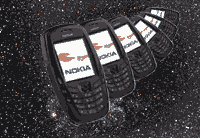 Ball rubbing
Ball rubbing Looking to scoop up some late summer sales action is Casio’s new Exilim Zoom EX-Z700 digital camera, available in silver and gunmetal.
Looking to scoop up some late summer sales action is Casio’s new Exilim Zoom EX-Z700 digital camera, available in silver and gunmetal. Cheese FX
Cheese FX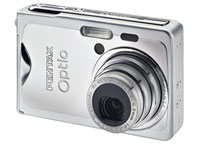 Pentax have announced their new ultra-compact Optio S7 camera which features a seven megapixel sensor with high sensitivity up to ISO 1600 (at 4 mp).Released almost a year after their popular Optio S6 model, the camera upgrade features Pentax’s “Face Recognition AF & AE”, a 2.5″ non-glare LCD monitor, DivX Movie Mode and support for the new SDHC card format.
Pentax have announced their new ultra-compact Optio S7 camera which features a seven megapixel sensor with high sensitivity up to ISO 1600 (at 4 mp).Released almost a year after their popular Optio S6 model, the camera upgrade features Pentax’s “Face Recognition AF & AE”, a 2.5″ non-glare LCD monitor, DivX Movie Mode and support for the new SDHC card format.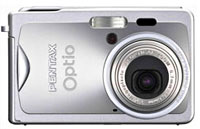 This ramps the ISO up to 1600, letting the Optio take advantage of faster shutter speeds in low light situations, but at the expense of image size, with the resolution slipping down to 4 MB (2304 x 1728 pixels).
This ramps the ISO up to 1600, letting the Optio take advantage of faster shutter speeds in low light situations, but at the expense of image size, with the resolution slipping down to 4 MB (2304 x 1728 pixels).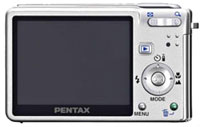 There’s also a movie anti-shake feature, although this will give users a narrower field of view than during normal recording.
There’s also a movie anti-shake feature, although this will give users a narrower field of view than during normal recording.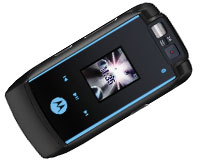 Somewhat earlier than expected, Motorola has officially announced the follow up to their wildly successful V3x phone, the new MotoRAZR MAXX.
Somewhat earlier than expected, Motorola has officially announced the follow up to their wildly successful V3x phone, the new MotoRAZR MAXX. Motorola claim that the phone can reach download speeds as fast as 3.6MB per second using the High-Speed Downlink Packet Access (HSDPA) handsets.
Motorola claim that the phone can reach download speeds as fast as 3.6MB per second using the High-Speed Downlink Packet Access (HSDPA) handsets.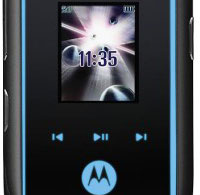 Moto has wedged in VGA and 2.0 megapixel cameras for two-way video calling, with Bluetooth 2.0+ Enhanced Data Rate, 50MB of internal storage and a microSD slot (up to 2GB) for storing tunes, videos and data.
Moto has wedged in VGA and 2.0 megapixel cameras for two-way video calling, with Bluetooth 2.0+ Enhanced Data Rate, 50MB of internal storage and a microSD slot (up to 2GB) for storing tunes, videos and data. Once again, America remains firmly rooted to the top of the league of spam-relaying nations, accounting for a hefty 23.2 per cent of the world’s unsolicited email during the second quarter of 2006
Once again, America remains firmly rooted to the top of the league of spam-relaying nations, accounting for a hefty 23.2 per cent of the world’s unsolicited email during the second quarter of 2006 Embedded spam
Embedded spam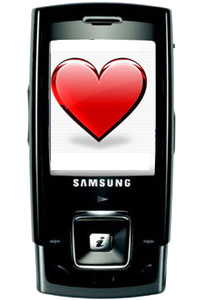 In the largest UK study of its kind, the Mobile Life Report has revealed our attitudes towards mobile phones and how they have impacted on our lives, with more than 90% of UK mobile users saying they can’t get through the day without using their phone.
In the largest UK study of its kind, the Mobile Life Report has revealed our attitudes towards mobile phones and how they have impacted on our lives, with more than 90% of UK mobile users saying they can’t get through the day without using their phone. Lord knows why people bothered to answer these questions, but the survey found that a quarter of people bothered to disconnect their mobiles before indulging in a bit of hanky panky, with 11% switching them to silent (writer resists cheap joke about vibra-alerts) and 14% turning their phones off altogether.
Lord knows why people bothered to answer these questions, but the survey found that a quarter of people bothered to disconnect their mobiles before indulging in a bit of hanky panky, with 11% switching them to silent (writer resists cheap joke about vibra-alerts) and 14% turning their phones off altogether.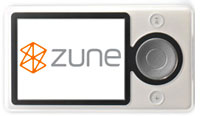 After an eternity of denials, obfuscation, rumour and counter-rumour, Microsoft have finally confirmed that they will be launching their own rival to Apple’s iPod range.
After an eternity of denials, obfuscation, rumour and counter-rumour, Microsoft have finally confirmed that they will be launching their own rival to Apple’s iPod range. Billboard Magazine, who broke the story, has speculated that the Zune-branded range of products will include music players, video players, WiFi-enabled devices and possibly even a portable video game device, with Microsoft incorporating social networking and mobile media purchasing.
Billboard Magazine, who broke the story, has speculated that the Zune-branded range of products will include music players, video players, WiFi-enabled devices and possibly even a portable video game device, with Microsoft incorporating social networking and mobile media purchasing.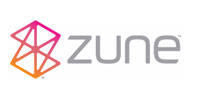 Microsoft has already busied itself with the dreadfully punned
Microsoft has already busied itself with the dreadfully punned